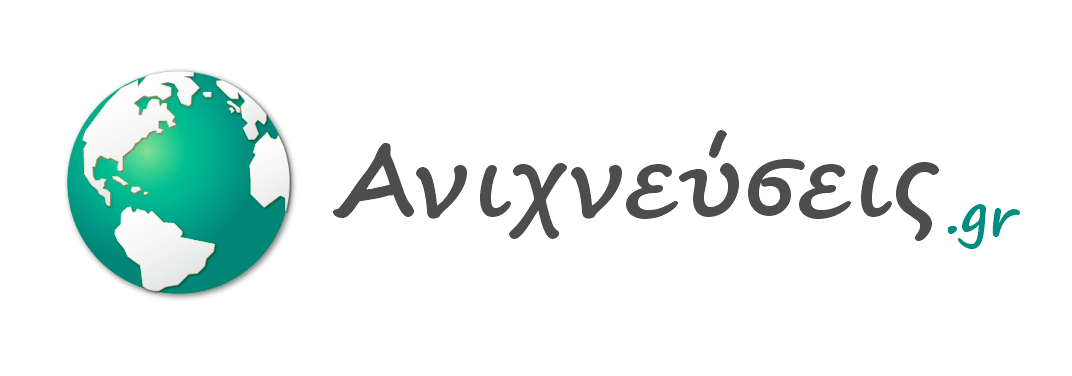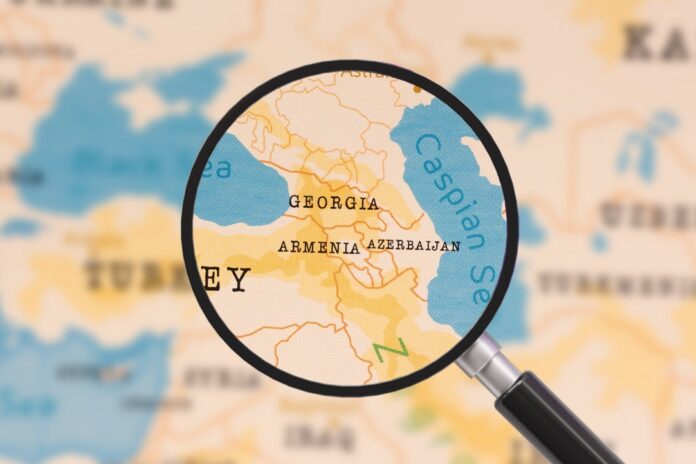Key Takeaways
- In recent years, Russia’s role as the main conflict mediator and security provider in the South Caucasus has diminished. Despite this, Russia retains its leading position in the region, which could be augmented if Russia achieves military or diplomatic success on the Ukraine front.
- Recognizing limitations on the use of hard power in the region, Moscow is prioritizing economic cooperation and connectivity, opting for tools that offer a more sustainable, long-term impact.
- Russia’s primary goals in the South Caucasus are to counter growing Western influence and curb the expanding roles of Turkiye and Iran. To achieve this, Moscow leverages cooperation with Ankara and Tehran while simultaneously working to secure its dominant position through both bilateral and multilateral engagements with regional states.
Over the past four years, Russia’s century-long dominance in the South Caucasus has been challenged. Key factors include Azerbaijan’s recapture of Nagorno-Karabakh; Moscow’s deteriorating ties with its strategic ally Armenia; its retreat as a regional mediator; the increasing presence of Turkiye, the West and Iran; Azerbaijan’s ambitions as a middle power; and the strain of the war in Ukraine. This paper examines how Russia lost its monopoly, its current priorities and how is its policies are adapting to these challenges.
Russia’s Broken Monopoly: Internationalization of the Region
For three decades after the Soviet Union’s collapse in 1991, Russia was the unchallenged dominant power in the South Caucasus. However, this began to change since 2020. Two key factors have weakened Russia’a position in the region: first, Armenia’s shift toward the West and diversification of its security partnerships, leaving Russia without a key local ally; and second, the Ukraine war, which diverted Moscow’s focus and allowed other actors to exploit its vulnerabilities in the Caucasus. The vacuum caused Russia’s diminishing role has been filled by regional and international actors, an unthinkable shift before 2020.
Russia’s strategic ally, Armenia, played a key role in maintaining Russian influence in the region for decades. This dynamic shifted dramatically in 2020 when the war between Azerbaijan and Armenia erupted over Nagorno-Karabakh, resulting in Azerbaijan’s capture of most of the region. At the time, Russia brokered a ceasefire that ended the conflict and stipulated the deployment of Russian peacekeepers in the remaining parts of Nagorno-Karabakh. That seemed an achievement for Russia – which for two decades has been seeking to have physical presence in in the region through various proposals – thereby securing its monopoly as a mediator. Retrospectively, however, the war was a turning point that marked the beginning of Russia’s declining influence.
The Ukraine war further undermined Moscow’s influence in the region, creating opportunities for Azerbaijan to intensify pressure on Nagorno-Karabakh, where Russian peacekeepers were stationed, leading to renewed fighting in 2022. That created a challenge for Russia and further strained Armenian-Russian military relations. Also, in 2022, Armenia notably began diversifying its security partnerships, signalling a shift away from Moscow.
Moreover, Karabakh ceased to serve a lever for Moscow after Azerbaijan took full control of the region by 2023 and following the escape of most of its Armenian residents, prompting the withdrawal of Russian peacekeepers. Russia’s presence continued to wane, with troops leaving Syunik, border guards exiting Zvartnots airport and the Armenian-Azerbaijani border and plans to vacate the Armenian-Iranian border checkpoint by January 2025 – all indicators of the shifting dynamics in Armenia-Russia security cooperation.
Russia’s retreat has created a vacuum increasingly filled by regional and international actors:
Turkiye played a key role in Azerbaijan’s 2020 victory, paving the way for the further expansion of its influence through several key steps: establishing a joint Russian-Turkish monitoring center in Nagorno-Karabakh, embedding itself in Azerbaijan’s armed forces with the appointment of General Bakhtiyar Ersay as a key advisor in the Azerbaijani Ministry of Defense, signing the 2021 Shusha Declaration on allied relations (effectively a defense pact), and opening Turkish arms production facilities in Azerbaijan. Economically, Turkish companies have received a large number of tenders for projects in Nagorno-Karabakh.
Turkiye has also become a priority in Armenia’s foreign policy. Yerevan has sought to normalize ties with Ankara and Baku, reopen borders and unblock communications. Armenia has even suggested re-evaluating the need for maintaining a Russian base on its territory as it was perceived by Turkiye as a hostile presence. All of these factors have preserved Turkiye’s significant role in Caucasus politics.
Iran has sought to engage in regional processes to ensure its role in the post-war order by being one of the mediators between Armenia and Azerbaijan, but Russia kept it on the side-lines. However, today, Tehran holds several advantages over Moscow. First, Iran successfully opened a consulate general in Syunik, increasing its influence in geopolitically important southern Armenia – a goal Russia has failed to achieve despite two years of attempts. Second, Iran has become a key security provider for Armenia: for instance Indian arms to Armenia pass through Iranian territory, and Tehran has conducted border drills to deter Baku from forcibly opening a corridor through Armenia to its exclave of Nakhchivan. Third, the Armenian public’s trust in Iran has grown, while confidence in Russia has weakened. Tehran has also actively engaged Azerbaijan: for example, to avoid antagonizing Azerbaijan through closer ties with Armenia, Tehran and Baku conduct joint drills and collaborate on communication projects like the “Aras Corridor.” The clearest sign of the shifting regional balance is Tehran’s firm opposition to Russia’s pressure on Armenia to open channels of communication with Azerbaijan. For the first time in modern history, Tehran managed to block a Moscow-backed initiative.
Non-regional actors have gained influence, with the EU and the US emerging as key mediators in the Armenian-Azerbaijani peace process between 2022 and 2024. While Russia once held a monopoly on negotiations, key geopolitical decisions shifted to Brussels and Prague, side-lining Moscow. Following the failure of Russian security guarantees during Azerbaijan’s attack on Armenia in September 2022, the EU established an unarmed border monitoring mission in Armenia, despite Moscow’s dissatisfaction. Yerevan rejected a Collective Security Treaty Organization (CSTO) proposal for a border mission, opting instead for the EU’s European Union Mission in Armenia (EUMA). Initially mandated for two months, EUMA’s mission was extended to two years, with its team growing to 209 observers.
Armenia has frozen its CSTO membership and is seeking security guarantees from Brussels and Washington. The historic Armenia-EU-US trilateral summit was designed to provide the necessary support for Yerevan to reduce its dependence on Moscow. The West has also sidelined Moscow on security issues – a US military officer is now the main adviser to Armenia’s defense ministry, and French instructors are involved in improving the combat readiness of Armenian units.
India has become Armenia’s main arms supplier, replacing Russia, which previously dominated Armenia’s arms imports – sometimes accounting for up to 90% – since independence. After the Ukraine war, Moscow could not meet its 2021 contract obligations with Armenia due to its own urgent needs. Yerevan has since signed $2 billion in contracts with New Delhi, covering artillery, air defense, electronic warfare and other systems, marking a significant strategic shift.
Pakistan and China, two of India’s competitors, are also influencing the balance of power in the South Caucasus. Beijing has signed strategic partnership agreements with Tbilisi and Baku and is implementing major infrastructure projects, such as a port in Anaklia, Georgia. Pakistan and Azerbaijan regularly conduct joint exercises that also include Turkiye, with the two sides agreeing to cooperate closely in the arms industry.
Through its alliance with Azerbaijan, Israel too continues to have a qualitative impact on the balance of power in the South Caucasus through its regular weapon supplies, including modern air defense systems, cooperation in space and cybersecurity, all of which have boosted Azerbaijan’s role in the region.
In sum, the South Caucasus is gradually shifting away from its traditional post-Soviet framework as part of Russia’s sphere of influence. It is becoming a focal point for competing interests of more distant actors from the West, the Middle and the Far East. This trend highlights Moscow’s diminishing monopoly as a regional security provider. The internationalization of the South Caucasus presents a new and complex challenge for Russia.
Russia’s Top Priorities in the Region
Faced with challenges that have eroded its dominance in the South Caucasus, Russia is focusing on two key objectives: weakening the West’s influence in the region and maintaining a leading role among the key regional players, Turkiye and Iran. To achieve this, Moscow relies on two diplomatic tools: multilateral regional formats and bilateral relations.
The 3+3 format reflects Russia’s efforts to assert its influence at the regional level while also excluding external, especially Western, actors. This multilateral dialogue platform includes Armenia, Azerbaijan and Georgia (though Georgia has yet to join) alongside Russia, Turkiye and Iran. Originally proposed by Turkiye, its acceptance by Russia indicates Moscow’s acknowledgement of Turkiye’s and Iran’s growing roles as regional powers and that it no longer has monopoly over the region. Nevertheless, Russia aims to secure a leading role within the platform.
For instance, the first meeting was held in Moscow, allowing Russia to set the agenda and define limits for Turkiye and Iran. Moscow is now working to institutionalize the format, positioning itself as the dominant player in the process. For Russia, the 3+3 format also offers an opportunity to foster trade, economic, transportation and logistics cooperation within the region while excluding external players. Together with Iran, Russia also uses the platform to manage regional conflicts and prevent Western intervention.
Russia is pursuing the same interests not only regionally but also on bilateral format. For instance, Moscow has signaled that it is ready to have contacts with Georgia and facilitate normalization of relations between Georgia, on one hand, and the Russian-controlled breakaway regions of Abkhazia and South Ossetia, on the other. Russia’s accommodating policy came after the victory of the ruling Georgian Dream party, which has refused to enter into confrontation with Russia.
With Azerbaijan, which has ambitions to become a bigger economic player, Russia has encouraged Baku to become a member of BRICS. In August 2024 Vladimir Putin made a historic two-day visit to Azerbaijan, after which Baku declared its readiness to join BRICS and later, in October, took part in BRICS summit in Russia. Azerbaijan and Russia also regularly criticize EUMA. Azerbaijan has recently made the withdrawal of the mission from the territory of Armenia a new precondition for the peace treaty, aligning with Russia’s interests.
In response to Armenia’s West-leaning policies, Russia’s options are limited, but it actively seeks to caution Yerevan against deepening ties with the West, which Moscow views as incapable of offering any benefits to Yerevan. Russia continues to reaffirm its commitments to Armenia’s security amid regional instability and competes with Western influence wherever possible. For instance, as Armenia plans to build a new nuclear power plant and considers proposals from countries like the United States, Russia has also submitted its own proposal, reflecting not just energy considerations but also political alignment.
What Russia Is Doing to Keep Its Influence
With its hard power options constrained by the ongoing war in Ukraine, Russia is shifting its focus to softer strategies to keep the South Caucasus states partially within its orbit, emphasizing efforts to cultivate long-term connections and influence.
For Russia, enhancing connectivity is one of the long-term tools for engaging local and regional actors. The West’s attempts to isolate Russia have driven Moscow to expand and create new transport links to access Asia, turning the International North-South Transport Corridor (INSTC) into a top priority. A key segment runs through the South Caucasus, with Azerbaijan playing a vital role as the Russia-Iran railway crosses its territory. Moscow and Baku are modernizing this section to boost capacity from 15 million to 30 million tons annually, while Russia is also investing in the Resht-Astara section in Iran to complete the project.
To keep Yerevan in its orbit through integration into transportation initiatives, Moscow is also involved in infrastructure projects in Armenia: new road sections are being constructed in Syunik with financing from Armenia and the Eurasian Development Bank. Work is also underway to include the Upper Lars border crossing point (a checkpoint between Russia and Georgia that cargo passes through to reach Armenia) in the route of the INSTC. Armenia is interested in being part of a global route that will connect it to India.
Bilateral trade serves as another instrument to maintain and develop Russia’s relations with Caucasus states, as Moscow opens its markets to Georgia, Armenia, and Azerbaijan. After Western sanctions on Russia, Georgia’s exports increased from $1.6 billion in 2021 to $2.4 billion in 2023. The development of economic relations between the two nations has affected political relations. For example, in 2023 Russia canceled the visa regime for Georgian citizens and resumed direct air communication. And in 2024, the terms for visa-free regime were expanded. Despite the lack of political relations, a thaw is underway, partly driven by Georgia’s interest in economic cooperation with Russia and the prospects it offers.
Russia has also kept Armenia in its orbit through maintaining economic ties. The trade turnover between the two countries increased from $2.6 billion in 2021 to $7.3 billion in 2023. That has significantly ensured the growth of Armenia’s GDP by 12.6% in 2022 and by 8.3% in 2023. Armenia declares that it is not interested in breaking relations with the Eurasian Economic Union (EAEU), affirming plans to actively participate in the organization despite the fact that Armenia has frozen its membership in the CSTO and is reducing its activity in the Commonwealth of Independent States (CIS).
Moreover, the EAEU-Iran free trade agreement boosts Armenia’s role as the only EAEU member bordering Iran. Close economic ties also give Russia leverage, as many Armenian producers depend on its market, allowing Moscow to impose restrictive measures if needed. Additionally, EAEU membership prevents Armenia from signing an Association Agreement with the EU, creating a long-term economic deterrent against turning to the West.
Azerbaijan is not a member of the EAEU and does not have a high level of trade cooperation with Russia. Therefore, Moscow has prioritized energy cooperation and political rapprochement. Following the signing a strategic document between Azerbaijan and Turkiye in February 2022, Moscow sought to elevate the formal level of its relations with Baku. This culminated in the signing of a Declaration of Allied Cooperation between Moscow and Baku. During Putin’s visit to Baku in 2024, six agreements on cooperation in various spheres were signed. The most important of them is an agreement on the joint production of tankers to deliver Russian and Azerbaijani oil to the world market.
Mediation. Russia’s mediation in the Armenian-Azerbaijani settlement has been an important tool for maintaining balance and securing its interests. With Yerevan and Baku rejecting Moscow’s role as mediator, Russia has come up with a new format. Moscow now seeks to facilitate dialogue within multilateral platforms that it champions. A successful example was the BRICS summit in Kazan in October 2024, where the leaders of Armenia and Azerbaijan met for the first time for a significant period of time and engaged in talks that advanced the negotiation process.
Russia also endeavors to play a role in Armenian-Turkish normalization. However, its attempts have not yielded success. A key Russian interest lies in maintaining a presence on the Armenian-Turkish border, currently secured by Russian border guards. As Russia’s influence in Armenia diminishes, involvement in negotiations may allow Russian forces to maintain a presence in this section and give them a new role in the event of an opening of the Armenian-Turkish border.
Conclusion
- In recent years, Russia’s role as the main conflict mediator and security provider in the South Caucasus has diminished. Despite this, Russia retains its leading position in the region, which could be augmented if Russia achieves military or diplomatic success on the Ukraine front.
- Recognizing limitations on the use of hard power in the region, Moscow is prioritizing economic cooperation and connectivity, opting for tools that offer a more sustainable, long-term impact.
- Russia’s primary goals in the South Caucasus are to counter growing Western influence and curb the expanding roles of Turkiye and Iran. To achieve this, Moscow leverages cooperation with Ankara and Tehran while simultaneously working to secure its dominant position through both bilateral and multilateral engagements with regional states.
- Disclaimer: The views and opinions expressed in the content are solely those of the authors and do not necessarily reflect the Emirates Policy Center’s position.





[…] Russia’s Approach and Evolving Priorities in the South Caucasus […]